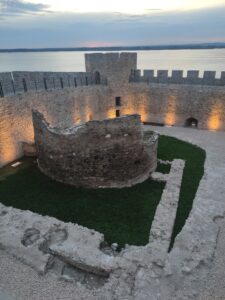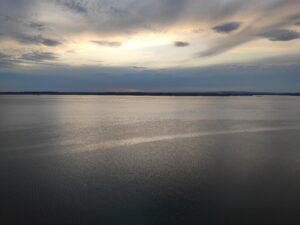The magic carried by eastern Serbia has always been associated with beauty of
Danube, but also for the fortresses that are somehow always connected with legends,
the mysteries and rich history of this region.

The reason for our trip was the news, which we have been waiting for a long time. After a detailed and extensive reconstruction, the Ram Fortress was officially opened! We did not hesitate and the first free weekend was ours. The pandemic subsided at the end of June, summer is on the doorstep, and we were eager to see another renewed cultural asset “on the beautiful blue Danube”. Nobody knows how many fortresses were built on the Danube in the past centuries. Nor will it be easy to determine. But we know of at least seven mayor ones in our territory. The most famous in eastern Serbia are the Smederevo and Golubac fortresses, but the Ram is also a special pearl. Now that it has been reconstructed, it is felt and receives a prima vista. The magic carried by eastern Serbia has always been associated with the beauties of the Danube, but also with the fortresses that are somehow always connected with the legends, mysteries and rich history of this region.
The pearl of the Danube

Ram Fortress is located 110 km from Belgrade, only 20 km drive from Silver Lake and is one of the oldest military fortifications in Serbia. The first information about the place Ram is mentioned in 1128, and the archaeological sites nearby tell us that Celts, Romans, Serbs, Turks and Hungarians lived and created history here. There are several legends that are related to the place itself, but also about the name of the fortress. One of them connects us to the Celts, who made temple (in Serbian language hram – H/Ram) here, while the other connects us to Romulus and Remus, and the third to the Turkish fortification Ihram Haram. It is almost certain that the famous Roman emperor Trajan had to pass through Ram on his way to the Dacians. On the other hand, the first written sources appear only a few centuries later. Here, Ram is mentioned as a place of conflict between Byzantium and Hungary, but the exact year when the Ram fortress was built is not known. After the Turks took control of our lands, they turned to Hungary and conquered the Pannonian Plain. The Danube was then the border, and in order to protect its territory, the Turkish Sultan Bayezid II (1480-1512) built a fortress with cannon openings, which made Ram one of the first artillery fortresses in this area. To this day, openings for as many as 36 cannon positions have been preserved. The extent of the defensive power of the relatively small Ram Fortress is also shown by the fact that the much larger Belgrade Fortress has only 22 cannon positions. The most interesting thing is a circular building in the very center of the fortress. We thought it was part of the defense system, but we later discovered that it was actually part of an ancient temple. During the reconstruction led by the Turkish agency TIKA, in cooperation with our Institute for the Protection of Monuments, a well-preserved Roman tablet was discovered. It is inscribed in Latin – Jupiter, the greatest and most powerful of all gods, is raised by the flag bearer of the VII Claudius Legion, Gaius Vettius Cossinius Rufinus. However, it is still a great unknown whether Rufinus’s mausoleum or the temple dedicated to the great god Jupiter was here. In addition to its significant historical and archaeological importance, Ram Fortress is also adorned with a magnificent view of the Danube.

Although officially the Danube is widest right next to the Golubac Fortress, the view from the Ram Fortress extends directly to the plain of Banat, creating the illusion of endless water. During the reconstruction, the access from the Ram Fortress to the river was renewed, so there is now a possibility to sail straight to Stara Palanka via the ferry. Great and incredible progress has been made during the reconstruction, which for the first time really secured the future of this historic place. Still, what we will most remember about Ram Fortress is the irresistible peace and twilight. The magic of the end of the day, which flowed from the Danube with touches of ecstasy. Legend has it that Sultan Bayezid also felt that, when he lowered his carpet (ihram) in this same place. Now it’s your turn to lower your picnic rug somewhere in eastern Serbia … as we can see, the magic never stops here.


Leave a Reply